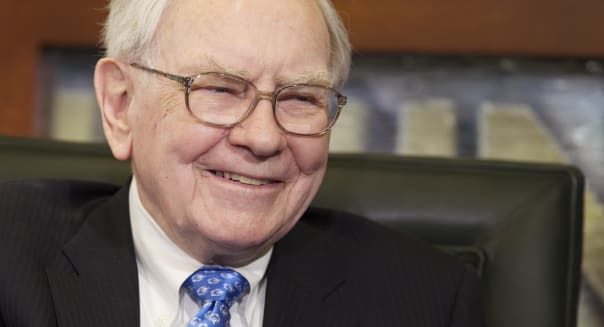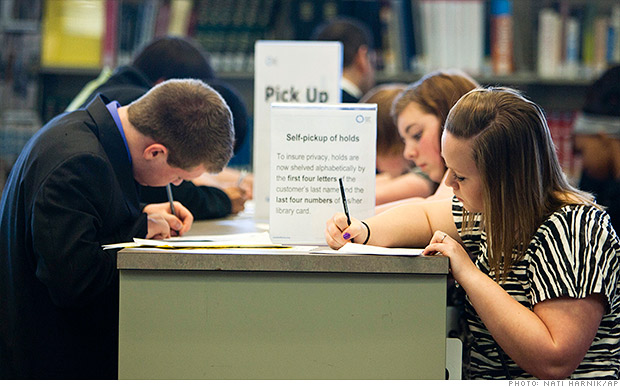The stocks on our Recommended List have attractions which long experience tells us tend to drive up share prices, suggests growth stock expert Stephen Quickel, editor of US Investment Report.
These characteristics are strong, reliable earnings growth, great products, ample market support, growth sector leadership, time-tested business models, and solid finances and management.
The new stocks added to our buy list also have rock-bottom valuations—an average forward P/E of 13.9 and average PEG of 0.67. Five-year earnings growth is projected at 24.4% a year. Here, in a nutshell, is what we like about them:
Gaslog Limited (GLOG)
This Monaco-based company owns and operates a sizeable fleet of ocean-going liquefied natural gas (LNG) carriers, which it charters out and manages for others. Earnings are expected to grow 32% a year. Thirteen of 14 analysts rate it a Strong Buy or Buy.
Himax Technologies (HIMX)
Operating out of Taiwan, Himax makes liquid crystal on silicon semiconductors for flat panel displays. Analyst upgrades have spurred trading volume. Our target price is $20.
MetLife (MET)
MetLife is one of the oldest and largest American financial companies, providing insurance, annuities, and employee benefit programs to 90 million customers in 50 countries. Its stock is also one of the cheapest at just 8.6 times earnings.
Packaging Corp. of America (PKG)
Boxes are still in big demand. This Lake Forest, IL containerboard manufacturer is expected to grow earnings by 27% a year. Fourteen analyst upgrades lifted 2014 estimates from $4.24 to $4.72 per share. Its P/E is 13.2, its PEG 0.48.
Polaris Industries (PII)
A great stock from 2011-13, this maker of snowmobiles and all-terrain vehicles suddenly swooned from $146 to $119 this January, but now has rebounded to $138, with a $160 price in analysts' sights. Seven of ten call it a Strong Buy, two a Buy.
Tenneco Inc. (TEN)
Located cross town from PKG in Lake Forest, TEN is a supplier emissions control and other auto parts with revenues of $9 billion. Earnings growth is estimated at 19% a year with an 11.4 P/E and a 0.60 PEG.
Subscribe to the US Investment Report here…
More from MoneyShow.com:
Top Ten Blue-Chip Values
Magic Formula Portfolio
A Trio of Healthcare Favorites
 Nati Harnik/AP Warren Buffett, chairman of the board of Berkshire Hathaway (BRK-B), is surprisingly open about his mistakes, chronicling them for all to read -- and learn from -- in his annual shareholder letters. The Cigar Stubs The textile mill that gave Berkshire Hathaway its name turned out to be an albatross for more than two decades as Buffett dithered over shutting it down. Located in Massachusetts, far from the new textile and cotton hubs down South, it was a money-loser from the start. He has since admitted his stubborn attachment to it probably cost Berkshire $200 billion in lost opportunity costs to invest in better companies. Back then, Buffett was more a proponent of the "cigar stub" theory of investing -- buying a downtrodden company or stock and smoking out the last few puffs of profit. Another iteration of this thesis gone wrong was his purchase of Blue Chip Stamp Co. in the late '60s. It was a lesser rival of the Sperry & Hutchinson Green Stamps Co. Both involved an early form of loyalty program in which shoppers collected stamps that could be redeemed for merchandise. "When I was told that even certain brothels and mortuaries gave stamps to their patrons, I felt I had finally found a sure thing," Buffett said in his 2006 shareholder letter. However, Blue Chip revenues declined by more than 80 percent from 1970 to 1980 and by almost 99 percent by 1990 as credit-card loyalty programs and increasing affluence made shoppers reluctant to waste time pasting stamps in books. What Buffett learned became a new leg of his investing stool: to only buy businesses for their demonstrated profitability. The Economic Moat Buffett coined the term "economic moat" to describe the competitive and hopefully monopolistic advantages that will help a company thrive. He has long said he regrets buying Dexter Shoes in 1993, purchasing it with Berkshire Hathaway stock then worth $433 million for an estimated loss of $3.5 billion. He admits now it didn't have the brand loyalty or moat he expected. Since then Buffett has hunted for big elephants like Heinz and Burlington Northern Santa Fe, and investing more every year in his "Big Four" stocks: Wells Fargo (WFC), IBM (IBM), American Express (AXP) and Coca-Cola (KO). Fear and Greed He purchased US Airways preferred stock in 1989 when optimism about the airline was at its zenith -- just in time for competitors to undercut its prices. He soon found there is no brand loyalty among the flying public. Airlines in general have a tendency to accelerate debt growth at the same time as their revenue growth. In this case, he basically broke even. In 2008, he bought high into ConocoPhillips (COP), expecting oil prices (then more than $100 per barrel) to go even higher, violating his own precept to buy when others are fearful and sell when others are greedy. The loss he took on that gamble amounted to more than $1 billion. Still, this didn't deter him from a blunder detailed in the 2013 annual shareholder letter -- buying $2 billion worth of bonds in Energy Futures Holdings, an electric utility that has suffered from a decline in natural gas prices. Buffett wrote with his usual candor,"Most of you have never heard of Energy Future Holdings. Consider yourselves lucky; I certainly wish I hadn't," adding the company is likely headed for bankruptcy. Buffett has had many more big wins than losses, including some out-of-the-park hits like American Express in the 1960s when it was embroiled in a small subsidiary's salad oil scandal, his purchase of Geico and an annual compounded gain of 19.7 percent in Berkshire Hathaway's book value since 1965. In a seven-decade career dating from age 11 when he bought his first stock, Buffett's mistakes have grown fewer and farther between. Even better for investors, when he chooses poorly, he explains where he went wrong, so we can all learn from his mistakes.
Nati Harnik/AP Warren Buffett, chairman of the board of Berkshire Hathaway (BRK-B), is surprisingly open about his mistakes, chronicling them for all to read -- and learn from -- in his annual shareholder letters. The Cigar Stubs The textile mill that gave Berkshire Hathaway its name turned out to be an albatross for more than two decades as Buffett dithered over shutting it down. Located in Massachusetts, far from the new textile and cotton hubs down South, it was a money-loser from the start. He has since admitted his stubborn attachment to it probably cost Berkshire $200 billion in lost opportunity costs to invest in better companies. Back then, Buffett was more a proponent of the "cigar stub" theory of investing -- buying a downtrodden company or stock and smoking out the last few puffs of profit. Another iteration of this thesis gone wrong was his purchase of Blue Chip Stamp Co. in the late '60s. It was a lesser rival of the Sperry & Hutchinson Green Stamps Co. Both involved an early form of loyalty program in which shoppers collected stamps that could be redeemed for merchandise. "When I was told that even certain brothels and mortuaries gave stamps to their patrons, I felt I had finally found a sure thing," Buffett said in his 2006 shareholder letter. However, Blue Chip revenues declined by more than 80 percent from 1970 to 1980 and by almost 99 percent by 1990 as credit-card loyalty programs and increasing affluence made shoppers reluctant to waste time pasting stamps in books. What Buffett learned became a new leg of his investing stool: to only buy businesses for their demonstrated profitability. The Economic Moat Buffett coined the term "economic moat" to describe the competitive and hopefully monopolistic advantages that will help a company thrive. He has long said he regrets buying Dexter Shoes in 1993, purchasing it with Berkshire Hathaway stock then worth $433 million for an estimated loss of $3.5 billion. He admits now it didn't have the brand loyalty or moat he expected. Since then Buffett has hunted for big elephants like Heinz and Burlington Northern Santa Fe, and investing more every year in his "Big Four" stocks: Wells Fargo (WFC), IBM (IBM), American Express (AXP) and Coca-Cola (KO). Fear and Greed He purchased US Airways preferred stock in 1989 when optimism about the airline was at its zenith -- just in time for competitors to undercut its prices. He soon found there is no brand loyalty among the flying public. Airlines in general have a tendency to accelerate debt growth at the same time as their revenue growth. In this case, he basically broke even. In 2008, he bought high into ConocoPhillips (COP), expecting oil prices (then more than $100 per barrel) to go even higher, violating his own precept to buy when others are fearful and sell when others are greedy. The loss he took on that gamble amounted to more than $1 billion. Still, this didn't deter him from a blunder detailed in the 2013 annual shareholder letter -- buying $2 billion worth of bonds in Energy Futures Holdings, an electric utility that has suffered from a decline in natural gas prices. Buffett wrote with his usual candor,"Most of you have never heard of Energy Future Holdings. Consider yourselves lucky; I certainly wish I hadn't," adding the company is likely headed for bankruptcy. Buffett has had many more big wins than losses, including some out-of-the-park hits like American Express in the 1960s when it was embroiled in a small subsidiary's salad oil scandal, his purchase of Geico and an annual compounded gain of 19.7 percent in Berkshire Hathaway's book value since 1965. In a seven-decade career dating from age 11 when he bought his first stock, Buffett's mistakes have grown fewer and farther between. Even better for investors, when he chooses poorly, he explains where he went wrong, so we can all learn from his mistakes. NEW YORK (CNNMoney) Employment opportunities for teens and early 20-somethings have plummeted in recent years, according to a new study by the Brookings Institution.
NEW YORK (CNNMoney) Employment opportunities for teens and early 20-somethings have plummeted in recent years, according to a new study by the Brookings Institution.  American teens testing below average
American teens testing below average